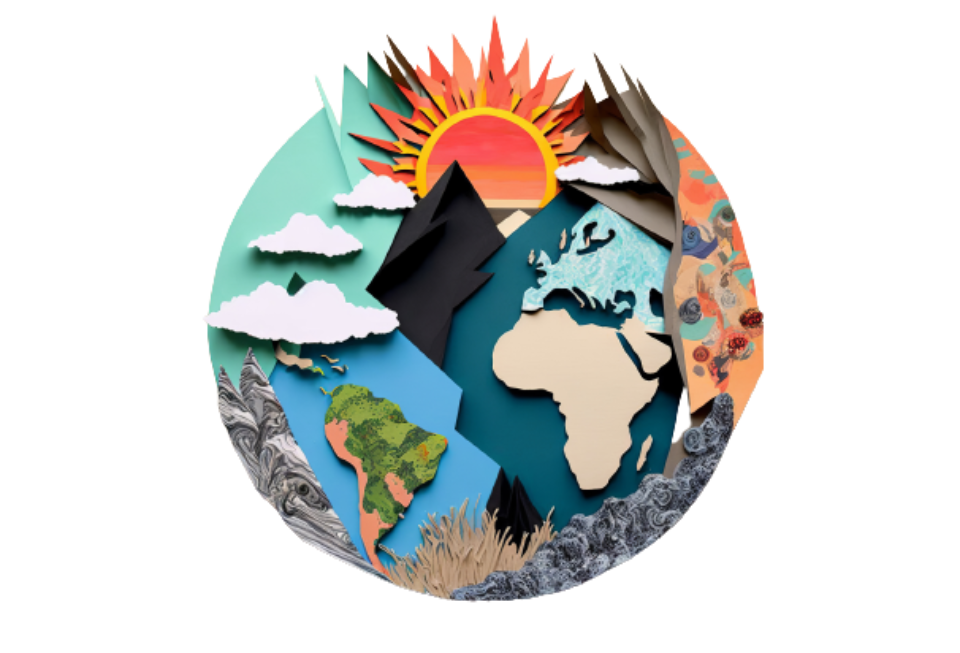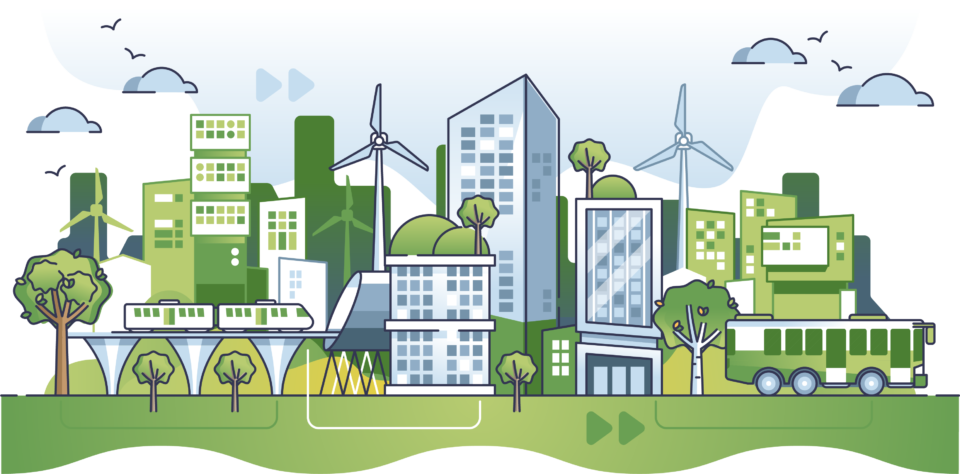Tiernaur Anderson (Senior Digital & Communications Specialist) / August 9, 2023
This has been a summer of non-stop climate news, some of it good, much of it bad. Time to see how well you were paying attention. Take a look at the quizzes below, and see if you can guess which headlines aren’t real.
🎯 Guess Which Climate Solution Headline Isn’t Real
A non-profit employs dogs that can sniff out environmental injustice.
Scientists revived a 46,000 year-old worm to ask it questions about climate adaptation.
A group calls on the World Meteorological Organization to change the way it names hurricanes.
A scientist suggested physically blocking the sun, à la The Simpsons, with the help of an asteroid.
🎯 Answer
🚫 “A group proposes that the World Meteorological Organization changes the way it names hurricanes” is not quite true.
🌀 This call for a new system of naming hurricanes, however amusing, is less of a genuine proposal and more of a messaging stunt to turn attention on politicians who are hindering climate action.
✔️ But the rest of these headlines about climate solutions are true.
🐕 Yes, you read that right: dogs are on the hunt for environmental injustice. A non-profit called Indigenous Vision—which is working to revitalize Indigenous culture, people, and land—is employing working dogs to sniff out toxic contamination such as copper, lead, and other heavy metals. The dogs, who are part of a collaborative project between Indigenous Vision and an organization called Working Dogs for Conservation (WD4C), can also “detect invasive plants in the seedling stage, animals that live underground, and endangered animals,” according to a canine field specialist from WD4C. “The dogs have been tremendously helpful in finding what we cannot see,” said Souta Calling Last, the founder and executive director of Indigenous Vision. Currently, the dogs are training to be able to detect PFAS, as well as illnesses in wildlife.
🪱 As sci-fi as it sounds, scientists truly did resurrect a small worm that had been in “suspended animation deep in the Siberian permafrost” for the last 46,000 years. The scientists leading this study hope to learn about the mechanisms of entering a dormant state to survive in extreme conditions to “reveal more about how, at a molecular level, animals can adapt as habitats shift because of soaring global temperatures and changing weather patterns.”
☄️ And lastly, although the idea of physically blocking the sun did indeed serve as a plot point in The Simpsons several decades ago, it is also an actual idea that has recently gained momentum as a climate solution. Recently, István Szapudi, a theoretical cosmologist from the University of Hawaii, has proposed using an asteroid to achieve this. One of the obstacles of creating a sunshield is that it would be difficult to keep it from drifting out of place. Szapudi’s recent study in Proceedings of the National Academy of Sciences suggests that one solution to this problem could involve affixing an asteroid to the shield so that it stays put. Geoengineering is a highly controversial topic, and though it was recently the subject of a report by the White House and discussion in Congress, still a theoretical one.
Click above to reveal the answer.

⛈️ Guess Which Bad News Headline Isn’t Real
It’s wintertime in South America but temperatures are somehow reaching 100°F.
Study finds that a new type of plastic pollution called ‘Frankenrocks’ is emerging.
Homes literally got carried away by floods from a melting glacier in Alaska.
⛈️ Answer
Psych — that was a trick question. ✔️ These headlines are all true (unfortunately).
🌡 Several countries in South America, including Chile and Argentina, have experienced numerous heat waves this season, despite it being winter in the Southern hemisphere. Some areas have reached 100°F, and others have broken their all-time high temperature records (from any time of the year).
🧟♂️ In Indonesia, a recent study reports that a new type of plastic pollution called “Frankenrocks” is emerging. This phenomenon results from molten plastic fusing with organic and naturally-occurring materials such as rocks and coral. The plastic likely comes from the burning of garbage. The term includes plastic pollution taking a variety of forms that mimic natural objects, such as rocks and pebbles, as well as crusts of plastic layering coastal surfaces.
🏔 And in Juneau, Alaska, flooding from the nearby Mendenhall Glacier—which has been occurring annually for the last decade—escalated and swept away two entire homes and a part of a third, and damaged many more. The flooding also threatened industrial infrastructure such as fuel tanks and hazardous materials containers. Research has shown that glaciers are especially susceptible to changing climate conditions.
Click above to reveal the answer.

☀️ Guess Which Good News Headline Isn’t Real
Visits to the ER for heart problems fell by over 40% after a coal processor in Pittsburgh shut down.
An endangered river in the Western Amazon in Brazil was granted personhood status.
Barbies will be plastic free by 2030, with a new line of “EcoWarrior” dolls that are made of algae and other organic materials being developed.
☀️ Answer
🚫 “Barbies will be plastic free by 2030, with a new line of “Eco Warrior” dolls that are made of algae and other organic materials being developed” is not true.
👠 This, sadly, is not true, despite having been reported as legit by several news outlets. The videos going around social media making this claim were actually a satirical campaign by an activist group aiming to highlight the importance of reducing plastic pollution. Though this was only satire, some fans are hoping the bit will pressure Mattel, the toy company that produces Barbie, into actually following suit. And there is some precedent for this: in 2014, Greenpeace released a video calling on LEGO to end its marketing contract with Shell, resulting in a decision by the toy company to end its production of gas station LEGO sets featuring the Shell logo.
✔️ The other good news is true, though!
🏥 An Environmental Health Research study found that, following the closure of a Pittsburgh coal processing plant in 2016, folks living near the plant had a 42% decrease in hospital visits for heart-related problems, a trend which continued for several years. Additionally, levels of sulfur dioxide air pollution fell by 90% near the site of the plant, and arsenic particulate matter fell by 66%.
🏞 And in June, a municipality in Brazil approved a proposal by an Indigenous councilman to grant personhood to the Komi Memem River and its tributaries, becoming the first river in the Brazilian Amazon to be considered a living entity with rights. The river is vital to the Wari’ people, who are indigenous to the area, and is actively under threat from deforestation, pollution, invasions, and land-stealing. The hope is that granting personhood status to the river will protect it, as well as the surrounding area and its inhabitants, from these threats.
Click above to reveal the answer.

Tiernaur Anderson is is a climate communications professional with an interest in making climate action more accessible for people at all levels of awareness and engagement. In her role she produces the biweekly newsletter, manages the Center’s AG Actions database and other online tools, designs Center reports and web resources, and assists in research for projects and reports.
